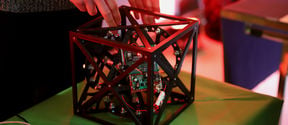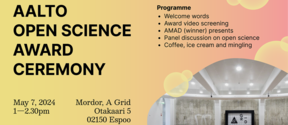Publishing as an example of how digitalization disrupts a business sector
How does digitalization cause the disruption of business sectors? To cast light on this from a Finnish perspective, we picked publishing of newspapers, magazines and books as a case that makes up nearly 60 % of the media sector. Because media has already been through a significant disruption, it is an interesting sector for studying digital breaches.
In our three-phase analysis, we first identify from economical statistics a disruptive turning point, that in the publishing sector occurred around year 2012 (Figure 1). At this time, turnover of the publishing sector started to go down even if BNP remained the same. At the same time, the drop in employment in the sector accelerated as well as the decrease in circulation. Facing this disruption, the media houses were forced to reconsider their strategies.
Technology, consumer behavior and business models as game changers
On the basis of ICT use we specify the major changes in operational environment that have contributed to the turning point. In publishing, we identify technology, consumer behavior and business models as game changers. Within technology, three waves brought change; Internet, social media and mobile media. Internet and WWW brought on-line news and web shops, whereas social media created a new channel for content sharing and discussion. Media went mobile through the growing use of smart phones and tablets. Finland jumped early on these developments, which dramatically influenced the media consumer habits – the second game changer – during the years preceding the turning point. The great majority of Finns then read newspapers on the web, and an increasing group also on their phones and tablets. A majority logged in on social media. In addition to changes in technology and consumption, the subscription based business model started to erode, which deepened the disruption. Printed newspapers and magazines, both based on subscription, lost in popularity to the often free web content, that has been difficult to produce in an economically viable way on an increasingly tough advertisement market.
How have media houses adjusted their strategies?
As the third step in our analysis, we consider how media houses have adjusted their strategies to survive in the disruption. This has happened mostly through cost savings and through increasing mutual cooperation. However, there are examples where media houses have found new digital business replacing the disrupted ones. Helsingin Sanomat has succeeded to get more than half of their print subscribers to also pay for the digital newspaper. The Norwegian Schibstedt has developed its online classified advertisements into a highly profitable international business, which is central for the whole corporation.
Our three-phase analysis can be applied for studying disruptions in other business sectors. It may also help decision makers in society to be proactive in their actions.
Figure 1. The Finnish publishing sector went into disruption around 2012; the turnover and employment dropped despite that BNP remained the same. (Data source: Finnish Centre of Statistics).
Article: Södergård, Caj, Bäck, Asta, Koiranen, Ilkka. 2016. Kustantaminen esimerkkinä digitalisaation aiheuttamasta toimialan disruptiosta: Palkansaajien tutkimuslaitos. Talous ja Yhteiskunta, No. 3, pp. 16-22.
- Published:
- Updated:
Read more news

Aalto ARTS alum Vidha Samya’s artwork featured at the Venice Biennale 2024
The Pavilion of Finland presents ‘The pleasures we choose’ at the 60th International Art Exhibition – La Biennale di Venezia until 24 November 2024.
IoT Forge donates EUR 1 million to the School of Engineering
The donation will be used for research and education on the Industrial Internet and digital twins.
Join us for the first Aalto Open Science Award Ceremony
All Aaltonians are welcome – no registration required!